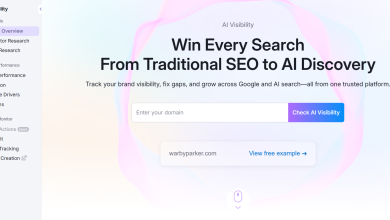We are at a tipping point. AI has become a standard part of how organisations operate, not a concept on the horizon. Trustmarque’s latest research shows that 93% of businesses are using AI in some form, with a third already applying it at scale. That’s adoption at a blistering pace.
Unfortunately, governance hasn’t kept up, with only 7% of organisations having fully embedded governance frameworks. That leaves a vast majority exposed to risks that range from reputational damage to outright regulatory breaches.
Awareness isn’t action
Most leaders I speak with know that AI carries risks. Bias. Security breaches. Black-box decisions. But recognising the risks isn’t the same as managing them. In too many cases, “governance” is little more than a policy on paper, or a box ticked once at project launch.
When fewer than one in three businesses test for bias, it’s no surprise we see AI reinforcing discrimination. When only a quarter test for interpretability, it’s inevitable that critical decisions are being made by systems no one can explain, not developers, not executives, and certainly not customers.
In other words, governance isn’t just lagging – it’s creating blind spots at the very moment AI is entering the boardroom agenda.
Governance that enables, not blocks
The mistake is thinking of governance as a brake on innovation. Done right, it’s the opposite: it’s the scaffolding that lets you build higher with confidence, enabling more efficient and effective innovation by reducing costs and the time involved with achieving regulatory compliance and market access.
That starts with alignment. Governance needs to map directly to business priorities, not sit as an isolated compliance function. If your AI strategy is about transforming customer engagement, then your guardrails must protect that trust as fiercely as your marketing promotes it.
It also means embedding checks where they matter most, inside the development lifecycle. Treating AI as if it were just another software project is a recipe for risk. Legacy software development life cycles (SDLCs) weren’t designed for bias detection or model drift. Those need to be built in from day one, not bolted on at the end.
I often describe it like this: without the right guardrails, developers are being asked to drive race cars on public roads. They’re expected to deliver speed without the safety infrastructure. Governance must provide those guardrails, not to slow them down, but to keep them on track and avoid penalties.
Orchestration: governance through design
When AI is deployed in silos, a chatbot here, a data model there, governance becomes fragmented. Logs are scattered, access controls are inconsistent, and oversight is reactive at best. Orchestration changes that picture.
By pulling AI systems together under a centralised platform, orchestration provides a single point of access and accountability. Every request, response, and model invocation can be tracked in audit logs. Permissions can be managed consistently, rather than on a case-by-case basis. Guardrails become policies enforced at the platform level, not guidelines buried in a policy document.
As organisations expand their use of AI, orchestration becomes the mechanism that keeps innovation and governance aligned. It gives auditors, regulators and boards a single transparent record of how it’s being applied, removing blind spots that arise when systems operate in isolation. For developers, orchestration means compliance is built into the workflow from the start, so they can focus on building rather than navigating uncertainty. In this way, it provides the foundation for AI adoption that is both scalable and sustainable.
The missing infrastructure
Even with policies and orchestration in place, many organisations still lack the plumbing to make governance real. Trustmarque’s study found that only 4% of enterprises have AI-ready infrastructure. Most are operating with patchy registries, manual audit trails, and fragmented monitoring.
This is where investment in tooling, skills, and training pays off. Automated bias detection, explainability platforms, orchestration layers, and centralised model registries aren’t “nice to haves.” They’re the operational backbone of sustainable AI. Without them, even the best-written governance policies collapse in practice.
Culture matters as much as controls
Finally, governance goes beyond technical processes and must be ingrained in culture. At present, only 9% of organisations say their AI governance is fully aligned with executive leadership. Too often, responsibility is split across IT, legal, compliance, and data teams, with no clear owner or collaboration. That fragmentation guarantees inconsistency.
Boards and C-suites need to engage directly. If governance is seen only as a compliance afterthought, it will never keep pace with adoption.
From awareness to action
We don’t need more awareness campaigns – we need execution. That means building governance into AI lifecycles from the very first line of code, and using orchestration to centralise oversight, enforce access controls, and provide auditable logs.
It requires investment in infrastructure that makes compliance enforceable, alongside clear ownership to ensure accountability is never in doubt. Most importantly, it requires a change in mindset to treating governance as an enabler of innovation rather than a bureaucratic hurdle.
AI isn’t slowing down. Neither are regulators. The organisations that thrive will be those that close the gap now, embedding accountability at every level so that AI can deliver value without compromising trust.
Because in the end, governance isn’t about saying “no” to innovation. It’s about making sure we can say “yes” confidently, responsibly, and at scale.




